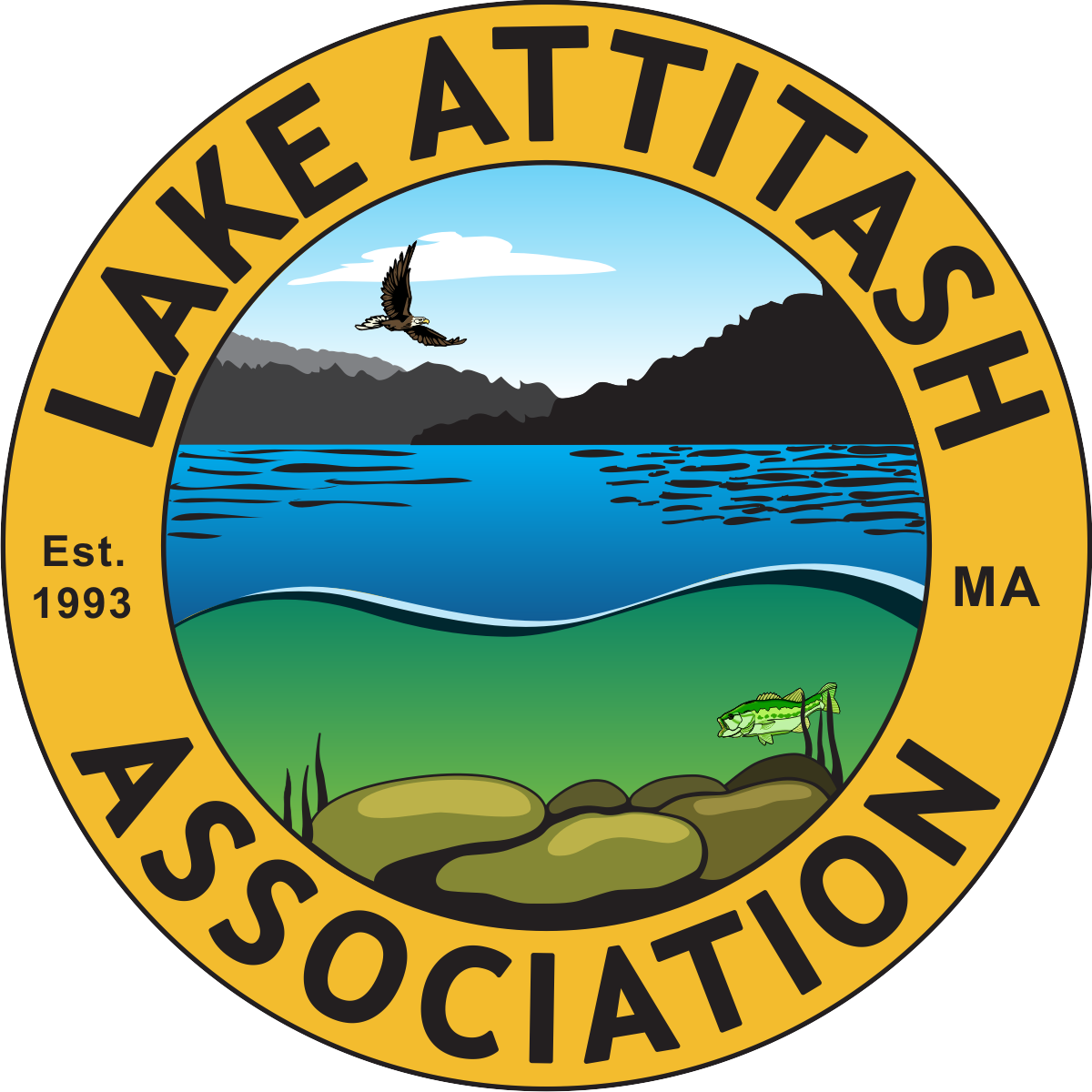Protecting the Lake: Soil Erosion

Believe it or not, the biggest threat to Lake Attitash water quality is plain old dirt, washing into our streams and lake…from our lawns, roads, driveways and construction areas.
What’s wrong with soil?
It clogs waterways, hurts fishes’ gills, and carries a lot of nutrients from decaying vegetation, fertilizer, pesticides, oil, detergents and other chemicals that contaminate the water and lead to scummy green lakes.
What can you do?
A few simple things are a great start:
- plant shrubs and trees to create a buffer between your property and the water to filter out pollutants
- seed and mulch any bare soil on your land
- repair and stabilize places where you see soil eroding
- minimize the time soil is exposed when you do construction or landscaping
Before you begin any construction or significant landscaping changes, please read the following joint message from the Conservation Commissions of Amesbury and Merrimac. The State and local wetlands laws and regulations protect the water quality of Lake Attitash.
Message from your Conservation Commissions:
“Does Your Proposed Project Need a Wetlands Permit?“
Property owners along the shores of Lake Attitash are reminded of the need to consult the Conservation Commission prior to the start of any proposed project within 100 feet of the lake or any bordering wetland. Not all proposed projects require a permit from the Conservation Commission. It is advisable to check with your local Commission to see if your proposed activity requires any permit.

Projects that are subject to review may include any tree or shrub clearing, expansion of lawns, installation of a fence, and any grading or filling activity.
Activities that require a wetlands permit include construction of any new structure, expansion of an existing structure, existing docks and the installation of a new dock, deck or patio, stairs and any retaining wall constructed along the lake or within the 100 foot buffer zone to the lake.
Activities that do not require a permit include: maintenance of existing lawns, planting of non-invasive trees and shrubs and maintenance but not enlargement of existing structures. It is best to arrange a consultation early in your planning process to ensure compliance with the Massachusetts Wetlands Protection Act and your local wetlands law and regulations.
The purpose of state and local wetlands laws and regulations are to protect the water quality of our lakes and waterways. The Lake is a backup water supply for the citizens of Amesbury and supplies groundwater for the residents of Merrimac. The lake and bordering lands also provide flood protection and storm damage control, help to prevention pollution, protect rare and endangered species and their habitat, and protect fisheries.”
The LAA has shared this message from the Conservation Commissions as a service to its members. We are aware that this message will raise many questions. Please direct any questions you may have about permitting directly to the Conservation Commission agents:
Merrimac: Michelle Greene (978 891 0238) Mgreene@townormerrimac.com
Amesbury: John Lopez (978) 388 8110) conservation@amesburyma.gov
